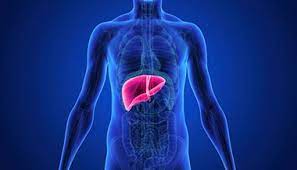How Alström Syndrome Impacts Liver Function at a Cellular Level?
- admin
- January 16, 2025
- 3:38 pm
- No Comments

Alström Syndrome is a rare autosomal recessive genetic disorder that impacts multiple organ systems, including the liver.
This condition is caused by mutations in the ALMS1 gene, leading to cellular dysfunction across various tissues.
Liver complications in Alström Syndrome often manifest as progressive damage, starting with fatty liver and potentially advancing to fibrosis and cirrhosis.
Understanding how this disorder affects liver function at a cellular level is crucial for developing targeted therapeutic strategies.
Article Index
- Introduction to Alström Syndrome
- Genetic Basis of Alström Syndrome
- Role of ALMS1 Protein in Cellular Function
- Ciliary Dysfunction and Liver Health
- Impact on Hepatocyte Structure and Function
- Development of Hepatic Steatosis in Alström Syndrome
- Progression to Liver Fibrosis
- Influence on Liver Metabolism
- Cellular Stress Responses in the Liver
- Impaired Cellular Signaling Pathways in Alström Syndrome
- Current Therapeutic Approaches and Future Research
- FAQs on Alström Syndrome and its Impact on Your Liver
- Conclusion
Introduction to Alström Syndrome
Alström Syndrome is an extremely rare condition, affecting fewer than one in a million people globally.
This genetic disorder involves a broad spectrum of symptoms, including loss of hearing and vision loss, obesity, insulin resistance, and heart complications.
As per bestdietarysupplementfordiabetics.com research, “Liver dysfunction is a significant feature of Alström Syndrome and is often underrecognized in the broader context of this condition”.
Liver involvement typically begins with non-alcoholic fatty liver disease (NAFLD) and progresses to more severe complications like fibrosis.
The cellular-level impact on liver function is particularly important to understand, as it sheds light on the mechanisms driving these complications and highlights potential therapeutic targets.
Genetic Basis of Alström Syndrome
Alström Syndrome is a rare genetic disorder caused by mutations in the ALMS1 gene, located on chromosome 2p13.1.
This gene encodes the ALMS1 protein, which is essential for various critical cellular functions.
The ALMS1 protein is involved in intracellular transport, ensuring that molecules are properly delivered to their destinations within the cell. It also plays a role in mitotic spindle organization, a key process during cell division that ensures accurate distribution of genetic material.
Additionally, ALMS1 is crucial for the functioning of primary cilia, which are tiny, hair-like structures on the surface of cells responsible for important signaling pathways and maintaining cellular homeostasis.
In individuals with Alström Syndrome, mutations in the ALMS1 gene lead to a defective or completely absent protein.
This disrupts these essential cellular processes, resulting in widespread dysfunction across multiple organ systems, including the liver, heart, kidneys, and sensory organs, contributing to the syndrome’s complex clinical manifestations.
Role of ALMS1 Protein in Cellular Function
The ALMS1 protein is particularly important for maintaining the function of primary cilia—microscopic, hair-like structures found on the surface of most cells.
Primary cilia are critical for regulating signaling pathways that control cell differentiation, division, and homeostasis.
In hepatocytes, cilia help maintain cellular organization, facilitate metabolic regulation, and coordinate bile secretion.
When ALMS1 is mutated, ciliary dysfunction ensues, disrupting these cellular processes. This dysfunction is at the core of how Alström Syndrome impacts liver function.
Ciliary Dysfunction and Liver Health
Ciliary dysfunction caused by mutations in the ALMS1 gene has significant repercussions for liver health.
Primary cilia, small hair-like structures on the surface of most cells, play a critical role in maintaining cellular communication and regulating essential signaling pathways.
Research published in Nature Reviews Gastroenterology & Hepatology (2022) emphasizes the connection between defective cilia and impaired cellular interactions in the liver.
Two key pathways affected are the Hedgehog and Wnt pathways, which are vital for liver development, repair, and regeneration.
When primary cilia are dysfunctional, hepatocytes— the main functional cells of the liver—struggle to respond to metabolic stress and repair cellular damage.
This impairs the liver’s ability to recover from injuries or adapt to chronic metabolic challenges, increasing vulnerability to long-term dysfunction.
Over time, this disruption can lead to conditions such as fatty liver disease, fibrosis, and cirrhosis, underscoring the critical role of cilia in maintaining liver health and resilience.
Impact on Hepatocyte Structure and Function
Hepatocytes, the primary functional cells of the liver, are heavily impacted by ALMS1 mutations.
Defective cilia impair the cytoskeleton’s integrity, which is essential for maintaining cell polarity and structure.
This loss of polarity can interfere with the liver’s ability to process nutrients, detoxify the blood, and produce bile.
Additionally, altered intracellular transport due to ALMS1 dysfunction affects the secretion of proteins and lipids, further compromising hepatocyte function.
Development of Hepatic Steatosis in Alström Syndrome
Hepatic steatosis, or fatty liver, is one of the earliest liver complications observed in Alström Syndrome.
This condition arises due to the liver’s inability to properly metabolize and export lipids, leading to triglyceride accumulation within hepatocytes.
As per a study published in Hepatology (2023), ciliary dysfunction impairs key metabolic pathways, including the regulation of peroxisome proliferator-activated receptor-alpha (PPAR-α), which plays a central role in lipid metabolism.
The resulting lipid overload in hepatocytes triggers inflammation and oxidative stress, setting the stage for further liver damage.
Progression to Liver Fibrosis
Chronic lipid accumulation and inflammation in the liver play a central role in the activation of hepatic stellate cells (HSCs), which are key contributors to liver fibrosis.
HSCs, normally quiescent, become activated in response to liver injury or stress.
Once activated, these cells produce excessive amounts of extracellular matrix proteins, including collagen, which accumulate in the liver and lead to fibrosis.
In individuals with Alström Syndrome, the progression of fibrosis is exacerbated by persistent metabolic stress, such as insulin resistance and chronic hyperglycemia.
Compounding this issue is the dysfunction of primary cilia caused by ALMS1 mutations, which disrupt essential cellular repair mechanisms and metabolic regulation.
Without functional cilia to mediate recovery and signaling, the liver becomes increasingly vulnerable to damage.
If fibrosis is left unmanaged, it can progress to cirrhosis, a severe condition marked by extensive scarring that significantly impairs liver function.
Over time, this increases the risk of liver failure, underscoring the importance of early intervention and targeted therapies to mitigate damage in patients with Alström Syndrome.

Influence on Liver Metabolism
Alström Syndrome disrupts several metabolic pathways in the liver, including those involved in glucose and lipid metabolism.
Insulin resistance, a hallmark of Alström Syndrome, exacerbates these metabolic imbalances.
Hyperinsulinemia and elevated blood glucose levels promote lipogenesis (fat synthesis) in the liver, further contributing to steatosis.
According to a 2021 study in Diabetes Care, these metabolic disturbances not only accelerate liver damage but also have systemic effects, increasing the risk of cardiovascular disease and other complications.
Cellular Stress Responses in the Liver
The accumulation of lipids and dysfunctional proteins within hepatocytes induces significant cellular stress, particularly endoplasmic reticulum (ER) stress and oxidative stress.
These stress responses disrupt normal protein folding and generate reactive oxygen species (ROS), which can damage cellular components.
In Alström Syndrome, these stress pathways are chronically activated, leading to hepatocyte apoptosis (cell death) and inflammation.
The resulting damage further impairs liver function and accelerates disease progression.
Impaired Cellular Signaling Pathways in Alström Syndrome
Ciliary dysfunction in Alström Syndrome disrupts key signaling pathways that are critical for liver health. Two of the most affected pathways are:
- Hedgehog Pathway: This pathway regulates liver regeneration and repair. Impairment due to defective cilia compromises the liver’s ability to recover from injury.
- Wnt/β-catenin Pathway: This pathway is essential for maintaining liver cell proliferation and homeostasis. Disruption leads to impaired tissue renewal and increased susceptibility to damage.
These signaling impairments compound the effects of metabolic and inflammatory stress, contributing to progressive liver dysfunction.
Current Therapeutic Approaches and Future Research
Currently, there is no cure for Alström Syndrome, and treatment is focused on managing symptoms and slowing disease progression. Key strategies include:
- Lifestyle Modifications: Diet and exercise to mitigate obesity, insulin resistance, and fatty liver.
- Pharmacological Interventions: Medications like metformin to improve insulin sensitivity or antioxidants to reduce oxidative stress.
- Monitoring and Early Intervention: Regular liver function tests and imaging to detect and address complications early.
Emerging research is exploring gene therapy to correct ALMS1 mutations and targeted molecular therapies to restore ciliary function.
Advances in regenerative medicine, such as the use of hepatocyte transplantation or liver organoids, also hold promise for treating severe liver complications in Alström Syndrome.
FAQs on Alström Syndrome and its Impact on Your Liver
Q-1: How do mutations in the ALMS1 gene affect liver cell function in Alström syndrome?
A-1: Mutations in the ALMS1 gene disrupt the formation and maintenance of primary cilia in liver cells. This impairment leads to altered cellular signaling pathways, affecting lipid metabolism and promoting the accumulation of fat within hepatocytes, a condition known as hepatic steatosis.
Q-2: What cellular mechanisms contribute to liver fibrosis in Alström syndrome?
A-2: In Alström syndrome, the accumulation of lipids in liver cells triggers an inflammatory response. This inflammation activates hepatic stellate cells, leading to their transformation into myofibroblasts. These activated cells produce excessive extracellular matrix components, resulting in fibrosis and scarring of liver tissue.
Q-3: How does insulin resistance impact liver function at the cellular level in Alström syndrome?
A-3: Insulin resistance in Alström syndrome impairs insulin signaling pathways in liver cells. This dysfunction reduces the liver’s ability to suppress gluconeogenesis and promotes lipogenesis, leading to increased glucose production and lipid accumulation within hepatocytes.
Q-4: What role does mitochondrial dysfunction play in liver cell pathology in Alström syndrome?
A-4: Mitochondrial dysfunction in Alström syndrome leads to impaired oxidative phosphorylation in liver cells. This impairment results in decreased ATP production, increased oxidative stress, and further lipid accumulation, contributing to hepatocyte injury and progression of liver disease.
Q-5: How does altered bile acid metabolism affect liver cells in Alström syndrome?
A-5: In Alström syndrome, mutations in the ALMS1 gene disrupt the normal processing of bile acids in liver cells. This disruption leads to altered bile acid composition, which can impair bile flow and promote cholestasis, further damaging hepatocytes and contributing to liver dysfunction.
Q-6: What is the impact of Alström syndrome on hepatocyte proliferation and apoptosis?
A-6: Alström syndrome affects hepatocyte proliferation and apoptosis by disrupting ciliary function, leading to dysregulated cell cycle progression. This dysregulation can result in impaired hepatocyte regeneration and increased susceptibility to cell death, contributing to liver damage and fibrosis.
Conclusion
Alström Syndrome profoundly impacts liver function at a cellular level, primarily through the effects of ciliary dysfunction caused by ALMS1 mutations.
This dysfunction disrupts critical cellular processes, leading to metabolic imbalances, chronic inflammation, and progressive liver damage.
From the development of hepatic steatosis to the progression of fibrosis, the liver faces numerous challenges in the context of this disorder.
Understanding these mechanisms is essential for developing targeted therapies to mitigate liver damage and improve outcomes for patients with Alström Syndrome.
While current treatments focus on symptom management, advances in gene therapy and regenerative medicine offer hope for more effective interventions in the future.
Continued research into the cellular and molecular underpinnings of this condition will be crucial for addressing its complex and multifaceted impacts on liver health.
References: